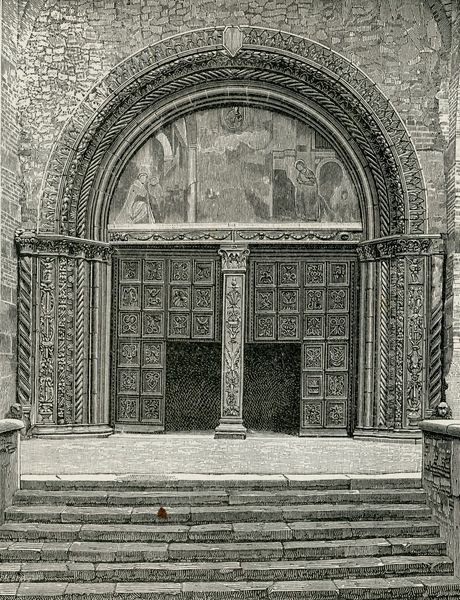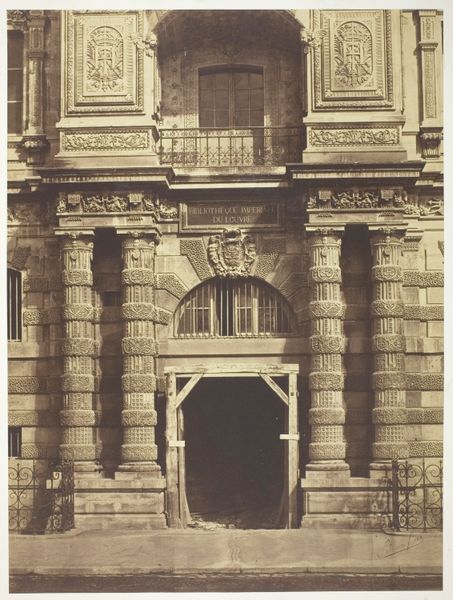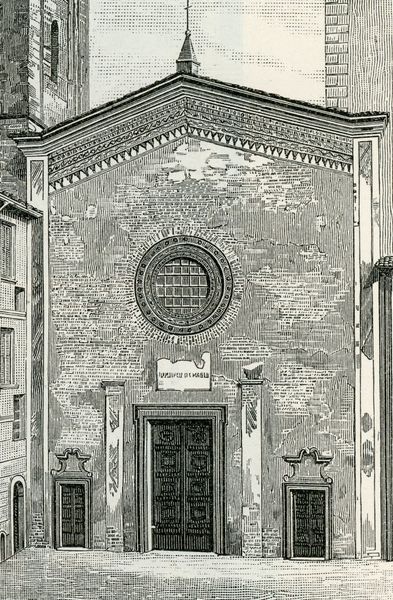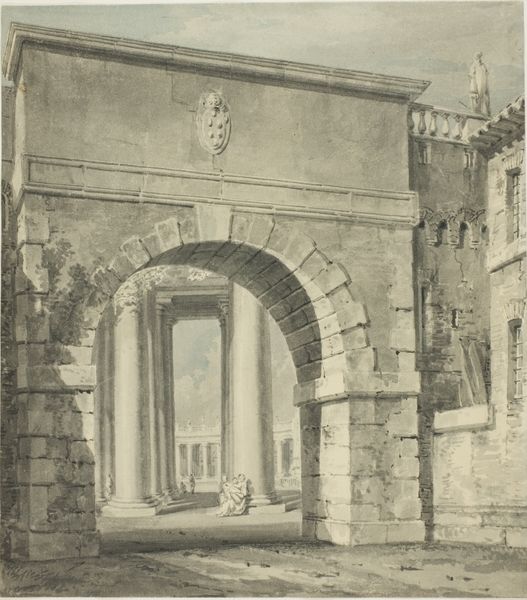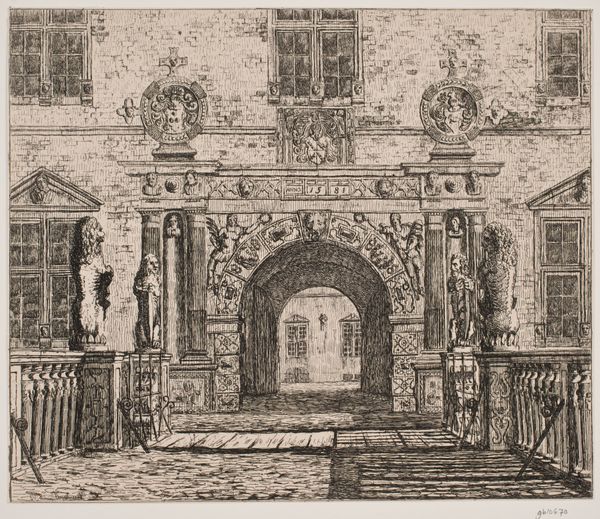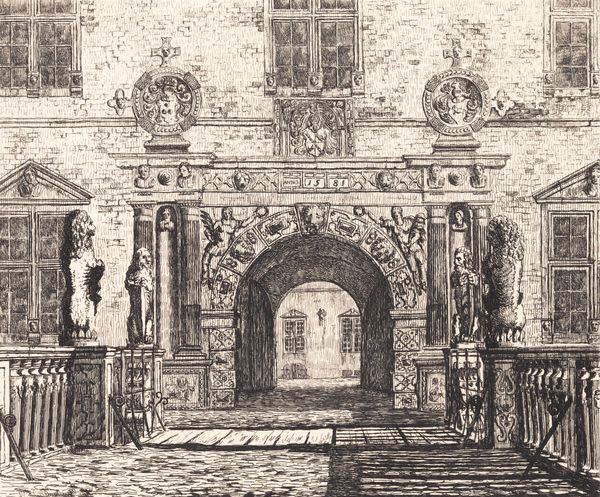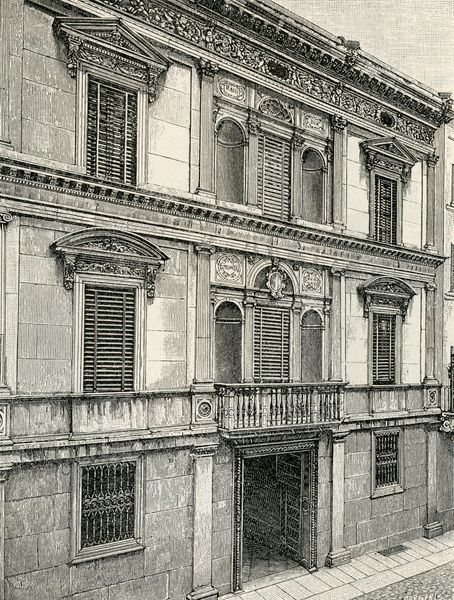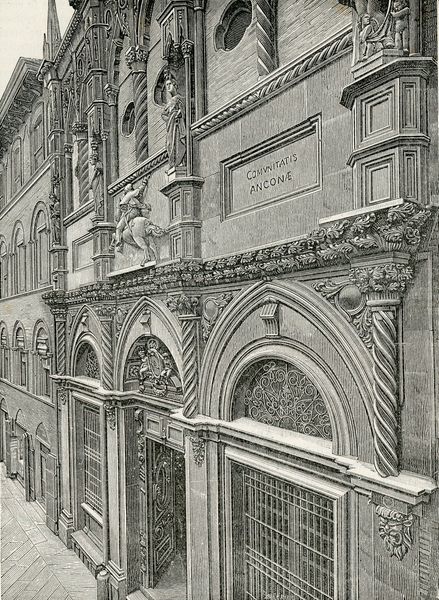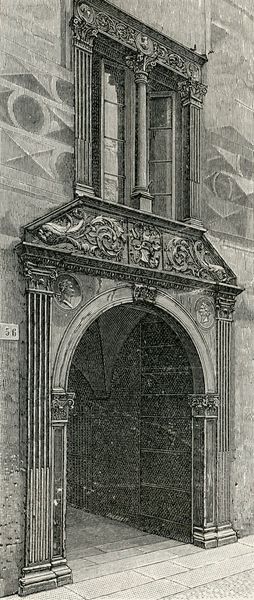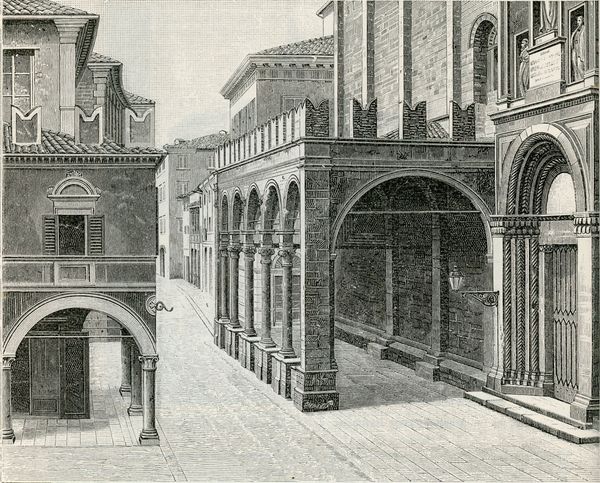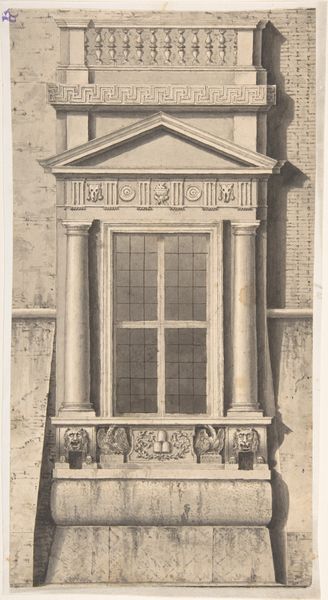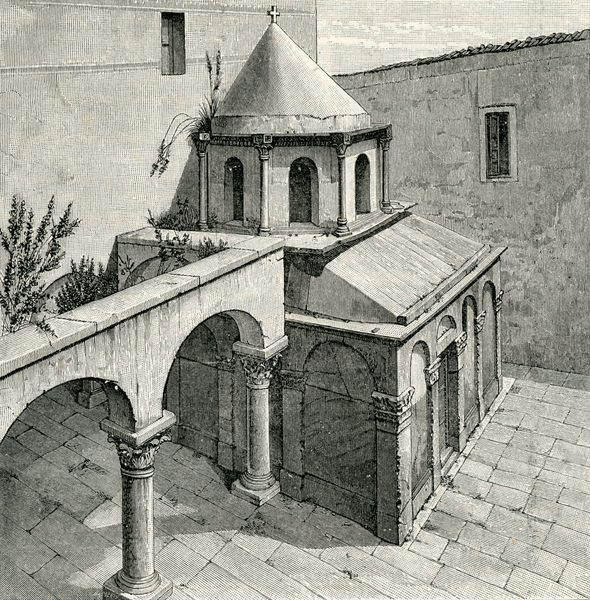
Copyright: Public domain
Curator: This is Giuseppe Barberis’s "Porta O Arco E Finta Finestra Del Monte Di Pietà", dating back to 1897. It’s a print on paper showcasing a detailed architectural scene. Editor: It has such a stern presence! The rigorous lines, the stark contrast—it projects a sense of unwavering authority and classical order, doesn't it? Curator: Indeed. But look closer at the texture achieved with the printmaking process. Consider the labour involved in creating such fine lines. This wasn’t simply about replicating classical ideals, but a dedicated craft utilizing industrial-age print techniques to create access for a larger audience. Editor: I’m more taken by the neoclassical devotion to perfect proportions, this gateway to another realm... Or another building, the precise mirroring and weightiness in the composition speak to more than just method, you know. The semiotic load is undeniable. Curator: Of course, but it’s also important to note where such ideals served a purpose. The Monte di Pietà was essentially a pawn shop—established to assist the poor, albeit through complex credit structures. Therefore, consider the implications: an imposing aesthetic façade crafted using cheap printing materials made for working-class circulation? Editor: Hmm, an interesting clash indeed, the drawing is excellent. The intricate detailing around the archway, the depth achieved through varied shading, the way the light seems to fall... There's a philosophical query being whispered, surely? Curator: The reality might have been far more prosaic; Barberis, and others producing such material, created an awareness of, if not access to, spaces which held power. But consider, who was really benefitting, the citizens of that area or Barberis and the local publishers? Editor: I admit I hadn’t thought about it quite like that. But I maintain there's a beauty in the starkness, even if tinged by industrial realities. The symmetry itself provides comfort in this world of mass production! Curator: Ultimately, it is how an artist makes accessible images from spaces with significant cultural importance, so the average citizen can appreciate what the local architecture had to offer at a small fee. It's quite interesting. Editor: Absolutely. I now perceive a new tension there between what it communicates through the picture frame and its life out in the world. Thank you!
Comments
No comments
Be the first to comment and join the conversation on the ultimate creative platform.

